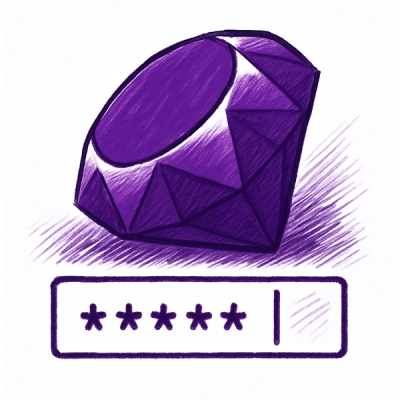
Research
/Security News
60 Malicious Ruby Gems Used in Targeted Credential Theft Campaign
A RubyGems malware campaign used 60 malicious packages posing as automation tools to steal credentials from social media and marketing tool users.
iterable-query-linq
Advanced tools
LINQ-like syntax using tagged templates.
npm install iterable-query-linq
import { linq } from "iterable-query-linq";
const q = linq`
from user of ${users}
where user.name === "Alice"
select user
`;
A query must begin with a from clause, may consist of zero or more other clauses, and must end with either a group clause or a select clause:
linq`
from user of ${users}
select user
`
linq`
from user of ${users}
where user.active
group user by user.role
`
from ClauseThe from clause is used to bind an identifier to each element in an expression:
from ID of SOURCE
Multiple from clauses can be chained together to form a cartesian join, resulting
in the cartesian product of the elements in each sequence.
If source is an async iterable, you must indicate async iteration using the await modifier. Async iteration is only supported in a linq.async block.
linq.async`
from await symbol of ${asyncStockTicker}
where symbol.name === "NASDAQ"
select symbol.value
`
join ClauseThe join clause is used to define a one-to-one relationship between the elements two iterables. All joins
are performed using an "equijoin" comparing the strict equality of the keys
selected from the outer and inner iterables:
join INNER_ID of INNER_SOURCE on OUTER_KEY equals INNER_KEY
join into ClauseThe join into clause is similar to the join clause except that it creates a one-to-many relationship in the form of a group join:
join INNER_ID of INNER_SOURCE on OUTER_KEY equals INNER_KEY into ID
let ClauseThe let clause creates a variable binding that persists through the query body
and is used to capture per-element state:
let ID = EXPRESSION
linq`
from user of ${users}
let fullName = user.firstName + " " + user.lastName
select { username: user.username, fullName }
`
where ClauseThe where clause filters the iterable, skipping items that do not match the supplied criteria:
where EXPRESSION
linq`
from x of ${numbers}
where x > 10 && x < 20
select x
`
orderby ClauseThe orderby Clause is used to sort an iterable using one or more comparators:
orderby EXPRESSION [ascending|descending] [, ...]
linq`
from user of ${users}
orderby user.lastName, user.firstName
select user
`
group ClauseThe group clause terminates a query and is used to group items with the same key:
group ELEMENT by KEY
linq`
from user of ${users}
group user by user.role
`
group into ClauseThe group into clause is similar to the group clause, except that it introduces
a new binding that can be used in a subsequent query body:
group ELEMENT by KEY into ID
linq`
from user of ${users}
group user by user.role into roleUsers
orderby roleUsers.key
select { role: roleUser.key, users: [...roleUsers] }
`
select ClauseThe select clause terminates a query and is used to select the resulting element
for each element in the source:
select EXPRESSION
linq`
from user of ${users}
select user.name
`
select into ClauseThe select into clause is similar to the select clause, except that it introduces
a new binding that can be used in a subsequent query body:
select EXPRESSION into ID
linq`
from user of ${users}
select user.name into name
where name !== "Bob"
select name
`
You can run queries using the built-in API as well (requires NodeJS):
import { parseAndExecuteQuery, parseAndExecuteQueryAsync } from "iterable-query-linq";
...
const users = ...;
const q = parseAndExecuteQuery(`
from user of users
select user.name
`, { users });
...
const asyncUsers = ...;
const q = parseAndExecuteQueryAsync(`
from await user of users
select user.name
`, { users: asyncUsers });
You can also start a NodeJS REPL that evaluates queries:
import { startLinqRepl } from "iterable-query-linq";
const users = ...;
startLinqRepl({ users });
// > from user of users
// ... select user.name
FAQs
LINQ-like syntax using tagged templates.
The npm package iterable-query-linq receives a total of 89 weekly downloads. As such, iterable-query-linq popularity was classified as not popular.
We found that iterable-query-linq demonstrated a not healthy version release cadence and project activity because the last version was released a year ago. It has 1 open source maintainer collaborating on the project.
Did you know?

Socket for GitHub automatically highlights issues in each pull request and monitors the health of all your open source dependencies. Discover the contents of your packages and block harmful activity before you install or update your dependencies.

Research
/Security News
A RubyGems malware campaign used 60 malicious packages posing as automation tools to steal credentials from social media and marketing tool users.

Security News
The CNA Scorecard ranks CVE issuers by data completeness, revealing major gaps in patch info and software identifiers across thousands of vulnerabilities.

Research
/Security News
Two npm packages masquerading as WhatsApp developer libraries include a kill switch that deletes all files if the phone number isn’t whitelisted.